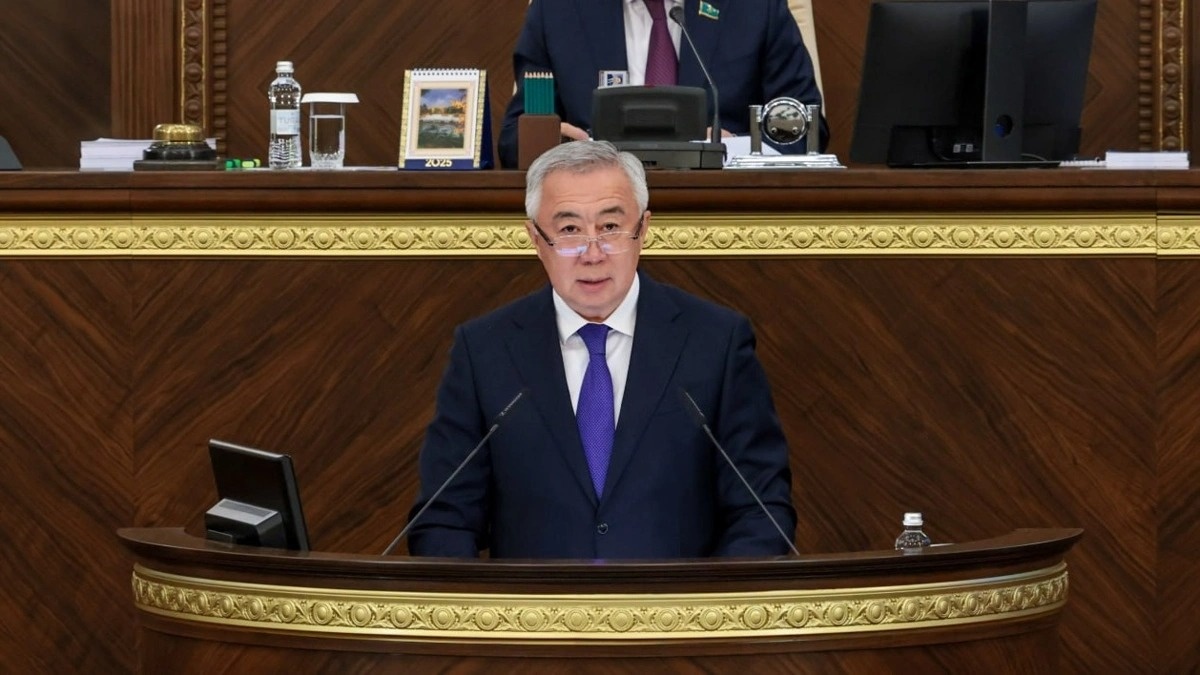Report: UN Tourism Initiative Aligns Rural Development with Sustainable Development Goals
The 2025 edition of the Best Tourism Villages (BTV) by UN Tourism has recognized 52 villages from 29 countries for their commitment to leveraging tourism as a catalyst for rural development and sustainability. This report outlines the initiative’s alignment with the Sustainable Development Goals (SDGs), its programmatic structure, and the latest cohort of recognized communities.
Advancing the Sustainable Development Goals Through Rural Tourism
The BTV initiative, launched in 2021, serves as a powerful mechanism for progressing the 2030 Agenda for Sustainable Development. By valuing and safeguarding rural landscapes, knowledge systems, and cultural heritage, the program directly contributes to several key SDGs.
Core Objectives and SDG Alignment
- SDG 8 (Decent Work and Economic Growth): The initiative fosters economic sustainability and value chain integration, creating economic opportunities through responsible tourism.
- SDG 11 (Sustainable Cities and Communities): It focuses on safeguarding cultural and natural assets, preserving community-based values, and ensuring the long-term viability of rural communities.
- SDG 1 (No Poverty) & SDG 10 (Reduced Inequalities): As stated by UN Tourism Secretary-General Zurab Pololikashvili, the initiative promotes “shared prosperity, inclusive growth and territorial cohesion in rural areas,” ensuring that development benefits all community members.
- SDG 15 (Life on Land): A core tenet of the program is the preservation of natural resources and biological diversity, promoting environmental sustainability.
- SDG 17 (Partnerships for the Goals): The BTV Network provides a global platform for exchanging best practices and fostering partnerships between public and private sector entities to drive rural development.
Programmatic Framework and Evaluation
The initiative is built upon a comprehensive framework designed to identify, support, and connect rural destinations committed to sustainable development.
Three-Pillar Structure
- Best Tourism Villages by UN Tourism: Recognizes outstanding rural destinations that demonstrate a clear commitment to sustainability across economic, social, and environmental dimensions.
- Best Tourism Villages by UN Tourism Upgrade Programme: Provides targeted support to villages with high potential, helping them meet the recognition criteria by addressing areas identified for improvement.
- The Best Tourism Villages Network: A collaborative space for all 319 member villages to share experiences, learn from one another, and access development opportunities.
Comprehensive Evaluation Criteria
Candidate villages are assessed against a rigorous set of criteria that reflect a holistic approach to sustainable development:
- Cultural and Natural Resources
- Promotion and Conservation of Cultural Resources
- Economic Sustainability
- Social Sustainability
- Environmental Sustainability
- Tourism Development and Value Chain Integration
- Governance and Prioritization of Tourism
- Infrastructure and Connectivity
- Health, Safety, and Security
2025 Village Designations
The 2025 cohort was selected from over 270 applications. The announcement was made during a ceremony in Huzhou City, China.
Recognized Best Tourism Villages
- Agaete, Spain
- Akyaka, Türkiye
- Aldea San Cristóbal El Alto, Guatemala
- Anıtlı, Türkiye
- Antônio Prado, Brazil
- Arquà Petrarca, Italy
- Asolo, Italy
- Asuka, Japan
- Barbaros, Türkiye
- Bellano, Italy
- Bled, Slovenia
- Carlos Pellegrini, Argentina
- Chamarel, Mauritius
- Digang, China
- Dongluo, China
- Ezcaray, Spain
- Flößerstadt Schiltach, Germany
- Grand River South East, Mauritius
- Hosszúhetény, Hungary
- Huanggang, China
- Jikayi, China
- Kale Üçağız, Turkiye
- Kandelous, Iran
- Kaštelir Labinci, Croatia
- Khinalig, Azerbaijan
- Kolochava, Ukraine
- Koyasan, Japan
- Krupa na Vrbasu, Bosnia Herzegovina
- Loriga, Portugal
- Lô Lô Chải, Viet Nam
- Maimará, Argentina
- Marktgemeinde Bad Hindelang, Germany
- Masfout, United Arab Emirates
- Mértola, Portugal
- Mórahalom, Hungary
- Muju Village, Republic of Korea
- Murillo, Colombia
- Neot Semadar, Israel
- North Azraq, Jordan
- Pacto, Ecuador
- Pemuteran, Indonesia
- Plateliai, Lithuania
- Pont-Croix, France
- Quynh Son Community-based Tourism Village, Viet Nam
- Shafiabad, Iran
- Shodoshima, Japan
- Soheili, Iran
- Synevyrska Polyana, Ukraine
- Tonosho, Japan
- Valendas, Switzerland
- Vila Nogueira de Azeitão, Portugal
- Yangsuri, Republic of Korea
Villages Selected for the Upgrade Programme
- Al-Bashandi Village, Egypt
- Brihuega, Spain
- Comuna Chiguilpe de la Nacionalidad Tsa’chila, Ecuador
- Dawa Village, China
- Evolène, Switzerland
- Iraq Al-Amir, Jordan
- Kemiren, Indonesia
- Lolol, Chile
- Meisenheim, Germany
- Montagnana, Italy
- Nari Village, Republic of Korea
- Nopala de Villagrán, Mexico
- Omonxona, Uzbekistan
- Oosterend, Netherlands
- Orduña, Spain
- Parroquia Biblián, Ecuador
- Quintandona, Portugal
- San Javier y Yacanto, Argentina
- San Martín de Unx, Spain
- Sant’Andrea di Conza, Italy
Future Outlook
The BTV initiative continues to expand its global network, reinforcing tourism’s role as a driver for sustainable and inclusive rural development. The call for submissions for the sixth edition will open in the first quarter of 2026, offering a new opportunity for rural destinations to demonstrate their commitment to the Sustainable Development Goals.
1. Which SDGs are addressed or connected to the issues highlighted in the article?
Detailed Explanations:
-
SDG 8: Decent Work and Economic Growth
The article directly connects tourism with economic benefits for rural communities. It states that the recognized villages “showcase the power of tourism” to “create economic opportunities” and “progress shared prosperity.” The initiative’s evaluation criteria include “Economic Sustainability,” reinforcing the goal of fostering sustainable economic growth through tourism.
-
SDG 11: Sustainable Cities and Communities
While focused on villages, this goal’s aim of making human settlements sustainable is central to the article. Target 11.4, which focuses on protecting cultural and natural heritage, is explicitly addressed. The article highlights that the initiative values and safeguards “rural areas along with their associated landscapes…and cultural heritage.” The evaluation criteria “Cultural and Natural Resources” and “Promotion and Conservation of Cultural Resources” directly align with this goal.
-
SDG 12: Responsible Consumption and Production
The initiative promotes sustainable tourism, which is a key component of SDG 12. The article mentions a “clear commitment to innovation and sustainability across economic, social, and environmental dimensions.” This commitment to balancing different aspects of sustainability reflects the principles of responsible production and consumption within the tourism sector.
-
SDG 15: Life on Land
The preservation of natural environments is a core theme. The article states that the program works to “preserve their natural resources” and safeguard “biological diversity.” The evaluation area of “Environmental Sustainability” ensures that recognized villages are actively protecting their local ecosystems, which is the primary focus of SDG 15.
-
SDG 17: Partnerships for the Goals
The article describes the “Best Tourism Villages Network” as a collaborative platform. It is described as “a space for exchanging experiences and good practices, learning, and opportunities among its members, and it is open to contributions from experts and public and private sector partners.” This network exemplifies the multi-stakeholder partnerships that SDG 17 aims to foster for achieving sustainable development.
2. What specific targets under those SDGs can be identified based on the article’s content?
Detailed Explanations:
-
Target 8.9: “By 2030, devise and implement policies to promote sustainable tourism that creates jobs and promotes local culture and products.”
The entire “Best Tourism Villages” initiative is a policy in action to promote sustainable tourism in rural areas. The article emphasizes that these villages are recognized for creating “economic opportunities through tourism” while simultaneously working to “safeguard their cultural heritage,” directly aligning with the objectives of this target.
-
Target 11.4: “Strengthen efforts to protect and safeguard the world’s cultural and natural heritage.”
This target is a central pillar of the initiative. The article explicitly states that the program “accelerates the role of tourism in rural development by valuing and safeguarding rural areas along with their associated landscapes…and cultural heritage.” The selection criteria for the villages include “Cultural and Natural Resources” and “Promotion and Conservation of Cultural Resources.”
-
Target 12.b: “Develop and implement tools to monitor sustainable development impacts for sustainable tourism…”
The nine areas of evaluation listed in the article serve as a comprehensive tool to assess and monitor the sustainability of tourism in the candidate villages. These criteria, including “Economic Sustainability,” “Social Sustainability,” and “Environmental Sustainability,” are used to measure the impacts of tourism and ensure it contributes positively to rural development.
-
Target 15.1: “By 2020, ensure the conservation, restoration and sustainable use of terrestrial and inland freshwater ecosystems and their services…”
The article’s emphasis on environmental protection connects to this target. The initiative recognizes villages that “preserve their natural resources” and safeguard “biological diversity.” The evaluation criterion of “Environmental Sustainability” ensures that the tourism development is not detrimental to the local ecosystems.
-
Target 17.17: “Encourage and promote effective public, public-private and civil society partnerships…”
The “Best Tourism Villages Network” is a direct manifestation of this target. The article describes it as a collaborative space for members, “experts and public and private sector partners engaged in the promotion of tourism as a driver for rural development.” This network facilitates the knowledge sharing and cooperation necessary for sustainable development.
3. Are there any indicators mentioned or implied in the article that can be used to measure progress towards the identified targets?
Detailed Explanations:
-
Number of participating villages:
The article provides concrete numbers that serve as an indicator of the program’s scale and success. It mentions “52 newly recognized Best Tourism Villages,” “20 villages have joined the Upgrade Programme,” and a total of “319 villages are now part of the…Network.” This quantitative data measures the growing implementation of sustainable tourism policies (relevant to Target 8.9).
-
The nine evaluation areas:
The list of nine evaluation criteria (e.g., “Cultural and Natural Resources,” “Environmental Sustainability,” “Social Sustainability”) functions as a comprehensive set of qualitative and quantitative indicators. These criteria are the specific metrics used by the Advisory Board to assess whether a village is successfully protecting its heritage (Target 11.4) and practicing sustainable tourism (Target 12.b).
-
Growth of the BTV Network:
The article states that the “BTV Network grows every year.” The size and activity level of this network, which facilitates partnerships, can be seen as an indicator of progress towards Target 17.17. The increasing number of members (319 villages) implies a strengthening of partnerships for sustainable rural development through tourism.
4. Create a table with three columns titled ‘SDGs, Targets and Indicators” to present the findings from analyzing the article.
| SDGs | Targets | Indicators |
|---|---|---|
| SDG 8: Decent Work and Economic Growth | Target 8.9: Promote sustainable tourism that creates jobs and promotes local culture. | The number of villages recognized in the “Best Tourism Villages” list (52 new) and participating in the “Upgrade Programme” (20 new). |
| SDG 11: Sustainable Cities and Communities | Target 11.4: Strengthen efforts to protect and safeguard the world’s cultural and natural heritage. | The use of evaluation criteria such as “Cultural and Natural Resources” and “Promotion and Conservation of Cultural Resources” to assess villages. |
| SDG 12: Responsible Consumption and Production | Target 12.b: Develop and implement tools to monitor sustainable development impacts for sustainable tourism. | The nine areas of evaluation used by the Advisory Board to assess and monitor sustainability across economic, social, and environmental dimensions. |
| SDG 15: Life on Land | Target 15.1: Ensure the conservation, restoration and sustainable use of terrestrial ecosystems. | The evaluation criterion of “Environmental Sustainability” used to assess a village’s commitment to preserving natural resources and biological diversity. |
| SDG 17: Partnerships for the Goals | Target 17.17: Encourage and promote effective public, public-private and civil society partnerships. | The existence and annual growth of the “Best Tourism Villages Network,” which now includes 319 villages and engages experts and partners. |
Source: hospitalitynet.org






